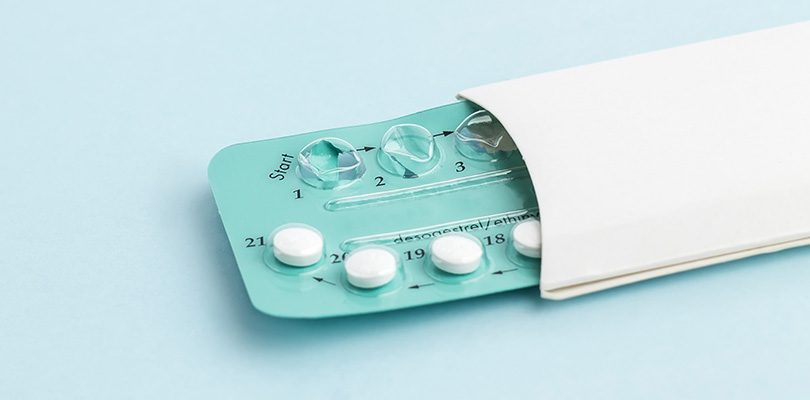What Is Low Estrogen Birth Control?
Many women use some form of birth control. Some use it purely as a contraceptive, while others use it to manage irregular periods or relieve symptoms such as heavy menstrual bleeding. Birth control comes in many different forms, but the most common is oral tablets, affectionately known as “the pill”.
Contraceptive pills contain artificially produced female hormones. Most of them contain a combination of estrogen and progesterone and are known as combined birth control pills. These hormones prevent pregnancy by stopping ovulation, thickening the mucus at the opening of the womb to stop sperm from entering, and thinning the lining of the womb to stop any fertilized eggs from implanting.
Combined estrogen and progesterone birth control pills are convenient to take and highly effective, around 99 percent effective when taken properly. However, they do carry some risks and may not be suitable for everyone.
This is because pills with higher levels of estrogen increase the risk of high blood pressure and blood clots in the deep veins. Women over the age of 35, women who are overweight and smokers are at greater risk. These women need to be more careful about the levels of estrogen in their birth control and if you fall into any of these categories, low estrogen may be the best option for you.
Low Estrogen Birth Control Options
Some older brands of combined birth control pills contain around 40mcg of estrogen, but now most brands contain just 30 to 35mcg. Some brands are even lower in estrogen, containing just 20mcg per pill. While other brands contain two or three types of the pill with different levels of hormones. These are intended to mimic a woman’s natural cycle more closely. Some pills contain only progesterone and no estrogen at all, and these may be more suitable for women at higher risk of side effects.
Most brands of combined birth control are taken for 21 consecutive days, with a seven-day break before the next pack. During this time most women will have a light period.
Some brands are taken for 28 days straight, with the extra seven pills being dummy pills. This helps women who find it difficult to remember when to start their next pack of pills as they continue from one pack straight onto the next. Progesterone only pills need to be taken every day.
As well as birth control pills, there are a number of other options which contain no estrogen at all. Hormonal patches, injections, implants and intrauterine devices (coils) are all available and offer a variety of different options for women who need low estrogen birth control.
Benefits of Low Estrogen Birth Control
Low estrogen birth control methods are primarily intended to prevent pregnancy, but they have a number of other beneficial effects too. Women who suffer from irregular periods, heavy or painful periods, or premenstrual symptoms may find that these symptoms reduce on birth control.
Hormonal birth control may also reduce the risk of developing fibroids, ovarian cysts, ovarian cancer and uterine cancer later in life. Some brands can also help with symptoms such as acne.
Finally, women who are approaching menopause but still having periods may find that low estrogen birth control can help to relieve symptoms such as hot flashes.
Side Effects of Low Estrogen Birth Control
If you're looking for a long-acting, reversible contraception method, birth control implants may be right for you. Read on to learn more about this option.
Women who take low estrogen birth control may find that they get some side effects from their medication.
The most common side effects are breast swelling or tenderness, breakthrough bleeding (spotting between periods), nausea, vomiting, bloating and headaches. These are more common in the first weeks of taking a new form of birth control and should settle down over time. If your side effects persist for longer than a few months, talk to your doctor about switching brands.
In addition to these side effects, some forms of birth control increase the risk of high blood pressure and clots. Scientists are also investigating a possible link between birth control and breast cancer.
Taking Your Low Estrogen Birth Control
Whatever form of birth control you choose, it is important to take it at the same time every day. Choose a time which is convenient and easy to remember. Just before bed or first thing in the morning works well for most people.
It is also important to remember that hormonal birth control only protects you against pregnancy, not sexually transmitted infections (STIs). If you have a new sexual partner, always use a condom in addition to your regular birth control and get tested for STIs regularly.
Certain medications, including some antibiotics and herbal medicines, can reduce the effectiveness of birth control pills. If you need to take any medication alongside your birth control, talk to your doctor or pharmacist first, and use extra precautions if necessary.
The same goes if you have diarrhea or vomiting, or if you forget to take a pill. Use another method of contraception until you are sure that the hormones have built back up to a level which will effectively prevent pregnancy.
The instruction leaflet that came with your birth control will tell you how long that takes and exactly what to do in this situation.







